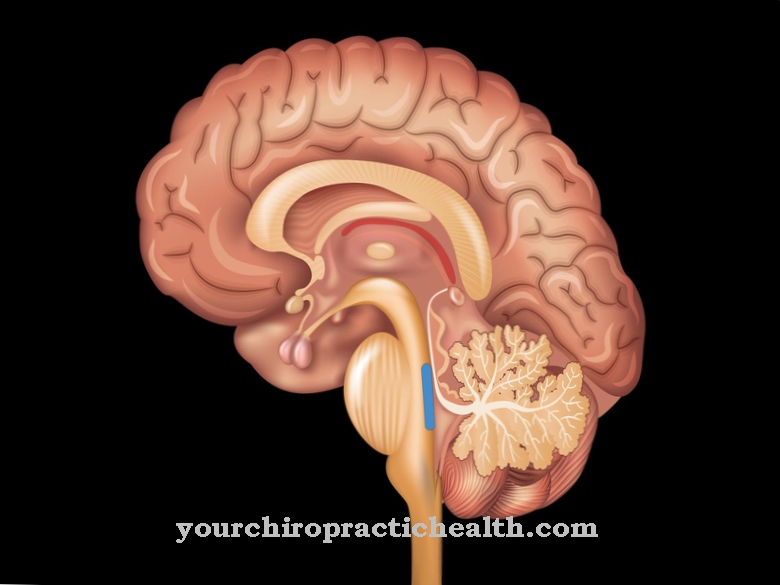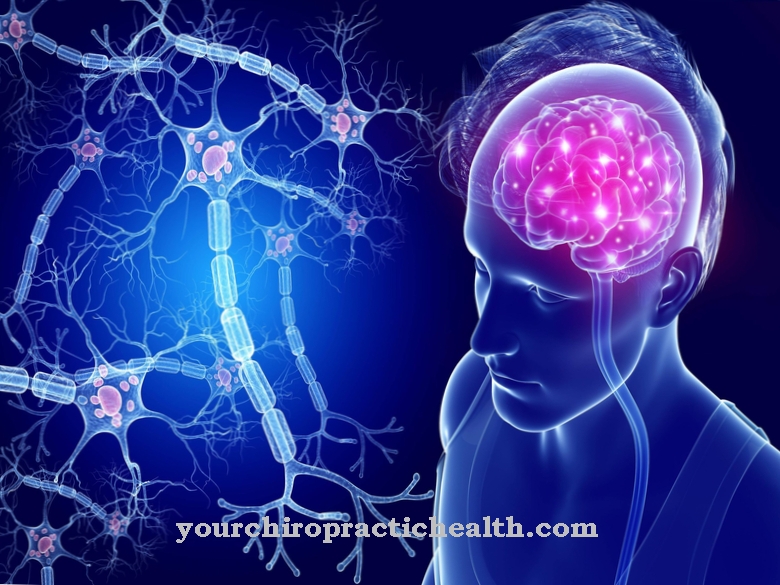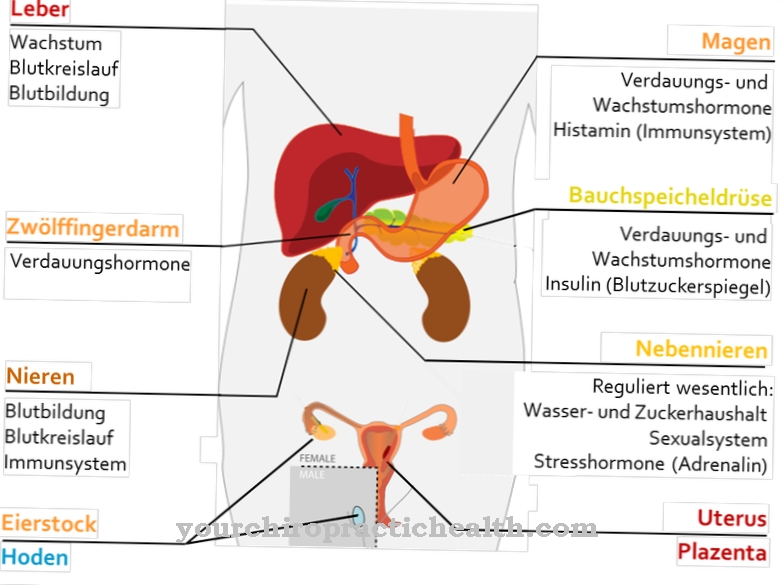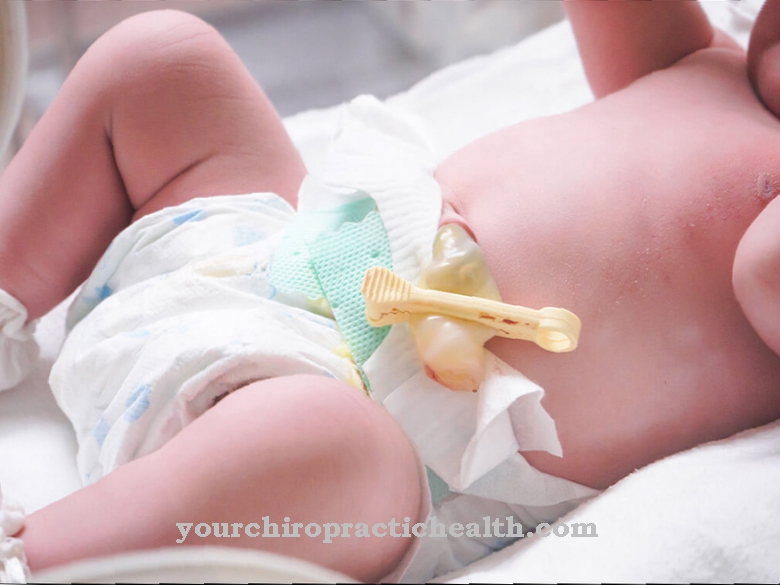Of the Medial pterygoid muscle is a muscle that belongs to the human chewing muscles. It is located on the inside of the temporomandibular joint. Its function is the movement of the temporomandibular joint.
What is the medial pterygoid muscle?
The pterygoideus medialis muscle is a jaw muscle of the human dentition. It has an important function in the motor skills of the jaw. A total of 4 muscles belong to the human chewing muscles. These are the masseter muscle, the temporalis muscle, the medial pterygoid muscle and the lateral pterygoid muscle.
Each of the four chewing muscles takes on a different task to ensure the chewing process. The musculus pterygoideus mediales is used to move the temporomandibular joint and thus to move the lower jaw. Its action closes the jaw. The medial pterygoid muscle is located on the inside of the lower jaw. It is called the inner wing muscle. The medial pterygoid muscle is in the form of a loop around the lower jaw.
The masseter muscle works closely with the medial pterygoideus muscle. By working together, they enable a powerful bite. Solid components of the food can also be ground up and biting off is possible. The pterygoideus medialis muscle is supplied by the pterygoideus nerve. This is a nerve branch of the maxillary nerve, which belongs to the V cranial nerve, the trigeminal nerve.
Anatomy & structure
The trigeminal nerve branches into further branches. One of these is the mandibular nerve. It runs through the foramen ovale. Its motor part is in turn divided into several branches that lead to the four mastication muscles of the lower jaw and the floor of the mouth.
The nerve branches are the masseteric nerve, the profund temporal nerve, the pterygoide nerve and the mylohyoid nerve. The masseter muscle is innervated by the masseteric nerve. The temporal nerves supply the temporales muscle. The pterygoideus lateralis and the pterygoideus mediales muscles are supplied by the pterygoid nerves. The supply of the floor muscles of the mouth is taken over by the mylohyoid nerve. The medial pterygoid muscle begins at the ptergoid fossa. This is a bulge on the skull.
It runs along the pterygoid process of the sphenoid bone. This is the human sphenoid bone, which is located below the eye. In addition, the medial pterygoid muscle runs along the pterygoid tuberosity. This is the inside of the angle of the jaw. The medial pterygoid muscle and the masseter muscle form a muscle loop. This wraps around the lower jaw of the human dentition. The medial pterygoid muscle can be easily felt on the mandibular branch.
Function & tasks
The four chewing muscles take on different tasks in regulating the chewing process. The masseter muscle is called the masseter muscle. Together with the pterygoideus medialis muscle, it is responsible for closing the jaw. The temporalis muscle is the temple muscle. It also supports jaw closure and also enables the lower jaw to be withdrawn.
The lateral pterygoid muscle enables movement of the temporomandibular joint. It is dubbed the wing muscle and directs the opening of the jaw one. He is responsible for advancing the lower jaw and protrusion. The pterygoideus medialis muscle is used to chop up the ingested food. It enables powerful biting. In addition, it is of great importance during the purchase process for a good chopping of the solid food components.
The medial pterygoid muscle influences the turning and painting movements required when chopping food. The jaw is closed by the pterygoideus medialis muscle. This process is also of great importance in language formation and singing. Certain tones and sounds can only be formed and pronounced by closing the jaw and at the same time the mouth.
You can find your medication here
➔ Toothache medicationDiseases
The human teeth and the chewing apparatus are particularly sensitive regions in the human body. The pain occurring there is often described as pain attacks that are almost unbearable. A dysfunction of the medial pterygoid muscle results in a restriction in jaw opening.
The force with which the mouth is closed is reduced. This means that the intake of food is restricted. In severe cases, it is impossible to bite off. Chopping up food is associated with discomfort. In everyday life, the more solid components of the food must be chopped up or soaked before being taken in the mouth. In addition, the pterygoideus mediales muscle is also used when speaking or singing. Once it is damaged, these tasks can no longer be adequately fulfilled. Speech formation is limited and some sounds can only be pronounced with impairment.
Although this is painless, it is perceived as unpleasant as it leads to misunderstandings in everyday life. Functional disorders of the temporomandibular joint affect complaints in the head, neck and back area. The muscles of the chewing organ are closely interconnected with the back muscles. Thereby they influence each other. As a result, headaches, tension or incorrect strain are to be expected.
A permanent bad posture due to the restriction of the muscles of the jaw also leads to comparable complaints. In addition, noises in the ears, visual disturbances or dizziness often have their origin in a defective chewing apparatus. The functional activity of the muscles changes due to misaligned teeth or jaws. This can then produce the corresponding symptoms. Nocturnal teeth grinding, difficulty swallowing, increased salivation or general toothache can also be triggered by damage to the medial pterygoid muscle.
























.jpg)



